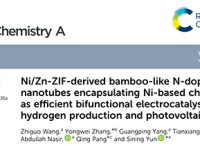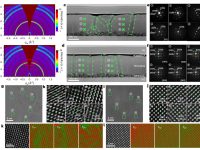
锂离子电池(Li-ion batteries, LIBs)在交通运输、电网储能与消费电子等领域的快速应用,持续推动着对兼顾充电速率、安全性、与性能的快充解决方案的需求。实现高效而可靠的快充过程,必须依托于对电池衰退机理、离子传输限制以及热管理约束的系统理解与定量分析。然而,当前商业电子设备与电动汽车(EV)中普遍采用的充电协议,大多基于经验优化,缺乏充分的机理透明度与物理一致性支撑。
本综述提出一种“反向解析(reverse perspective)”的研究思路,即通过对现有实际充电协议的系统分析,提炼其中隐含的电化学动力学、热力学及传输过程规律,以反哺未来协议设计的机制框架。为此,本文比较了多类标准化快充协议及实际应用场景(包括智能手机与电动汽车)中采用的典型充电曲线,分析其电压–电流演化随荷电状态(SOC)的依赖关系,并揭示不同策略背后的设计逻辑与约束边界。
进一步地,本文将这些特征与SOC依赖的电极材料物理–化学行为、由协议设计诱发的极化与反应异质性、以及由协议特性决定的不同产热模式相结合进行分析与讨论,构建了快充条件下多场耦合机制的综合视角。随后,综述重点介绍了多种先进原位与多模态表征技术,这些技术为实时解析快充过程中的结构演化、扩散动力学及热过程提供了关键手段。
最后,展望部分指出,未来充电协议的开发可依托于多尺度材料建模、实时传感反馈驱动的自适应控制、以及基于数据驱动的算法优化,以实现兼具高效率、长寿命与安全可靠性的下一代智能快充体系。

图1:标准化快充方案及实际应用设备如智能手机和电动汽车中的快充曲线。
Schematic illustrations of a few common LIBs charging protocols, including a) Constant Current-Constant Voltage (CC-CV), Multistage Constant Current-Constant Voltage (MCC-CV), Boost Charging, and Pulse Charging, and b) Constant Power-Constant Voltage (CP-CV) and Variable Current Profile (VCP). c) The charging protocol adopted by a Xiaomi Redmi Note 12 smartphone. d) The charging protocol adopted by an Apple iPhone 16 Pro smartphone. e) The charging protocols used by a few electric vehicles: Tesla Model 3 LR AWD 2019 (T3-2019), Tesla Model 3 LR AWD 2021 (T3-2021), Tesla Model S Plaid 2021 (TS-2021), and Hyundai Ioniq 5 (HI5).

图2:快充下电极材料的物理和化学性质演化。
a) Changes in the unit cell volume, the c and a lattice parameters of NMC811 at various SOCs during the first charge. b) Changes in the unit cell volume, the interlayer spacing dc-c and the a-axis of graphite versus the lithium content. c) Variation of the lithium diffusion coefficient, , of NMC811, NMC532, and NMC111 as a function of the SOC. d) The lithium diffusivity for the Stage 2 (dark blue squares) and Stage 1 (light blue circles) phases in the Li-graphite system, derived from kinetic Monte Carlo simulations. e) Battery internal Ohmic resistance at various SOC. f) Thermal stabilities of Ni-rich NMC cathode and Si-rich Si-C anode at different SOCs.
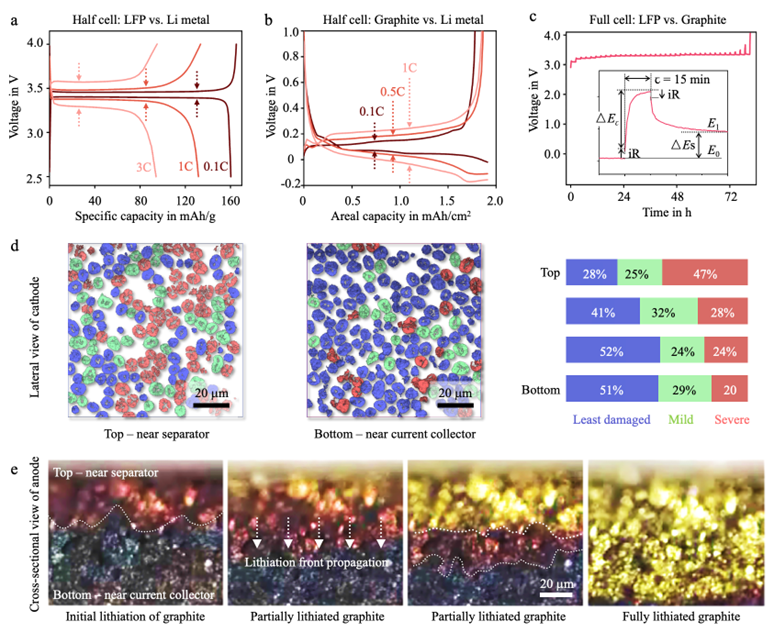
图3:快充下的极化与反应异质性。
Electrochemical polarization in battery electrodes and cells. a) Half-cell (LFP vs. Li metal) cycling data at various C-rates. b) Half-cell (graphite vs. Li metal) cycling data at various C-rates. c) Full-cell (LFP vs. graphite) GITT data, with an inset illustrating the voltage evolution during a titration step. d) Depth-dependent cathode damage profile revealed by X-ray nano-tomography, inferring the polarization in NMC cathode electrode. e) Depth-dependent anode SOC evolution revealed by operando optical microscopy, inferring the polarization in graphite anode electrode.

图4:不同充电协议下的热行为。
Illustrative measurements of battery temperature evolution under different charging protocols. a) 1C CC–CV for a newly purchased commercial 18650-type NMC–graphite lithium-ion cell (nominal capacity 3.0 Ah, nominal voltage 3.6 V, unused), b) 1C pulse charging (2C current, alternating 1 s charging with 1 s rest) followed by CV for the same type of cell, c) 1C boost charging with CV for the same type of cell, and d) a commercial Xiaomi Redmi Note 12 smartphone (built-in 5.0 Ah cell) charged with a 33 W charger. Temperature was monitored at the cell surface using a thermocouple.
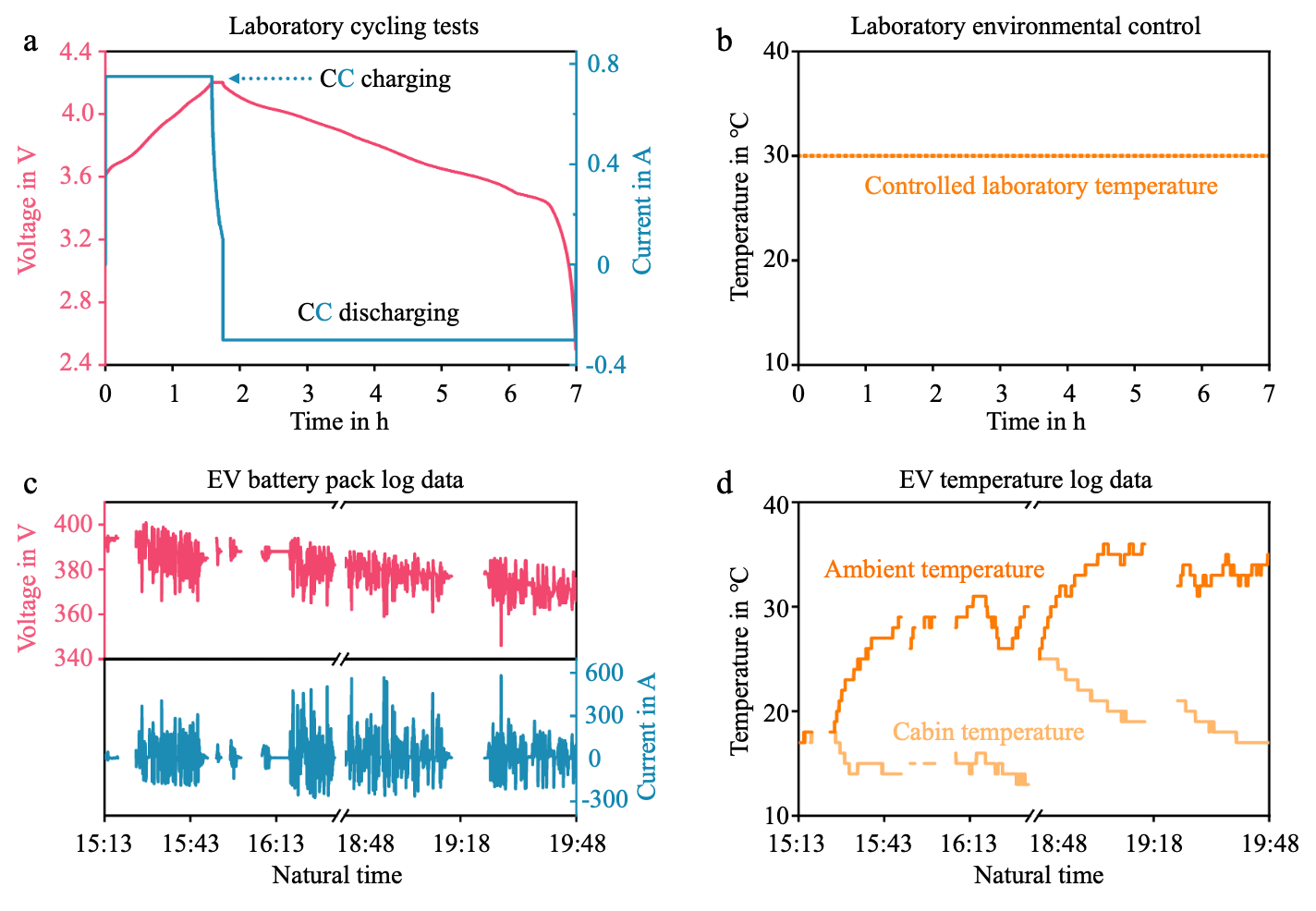
图5:实验室测试与真实车辆工况下充电协议的对比。
Laboratory controlled battery duty cycle and the duty cycles in electric vehicle in real-world service. a) A standard CC-CV charging and CC discharging duty cycle for a newly purchased commercial 18650-type NMC–graphite lithium-ion cell (nominal capacity 1.5 Ah, nominal voltage 3.6 V, unused). b) The corresponding temperature duty cycle under controlled laboratory environment. c) The voltage and current log data of an EV in real-world service. d) The corresponding temperature log data from this EV.
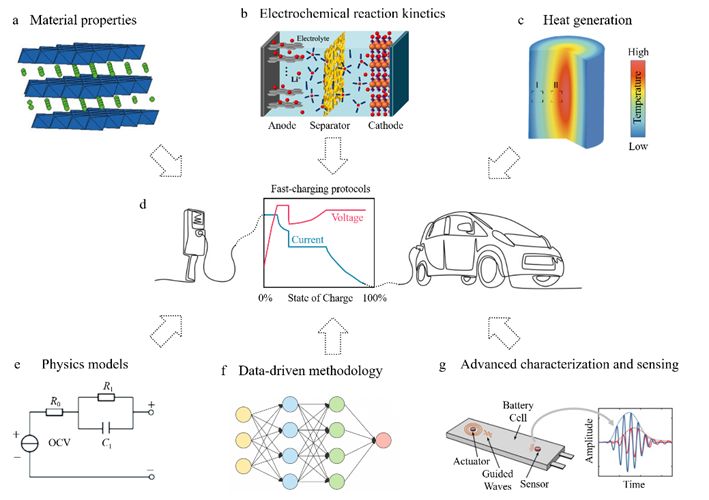
图6:智能快充技术总体框架。
Comprehensive framework for smart fast charging technologies.
参考文献:
Li, W.; Yanyachi, A.; Xia, J.; Kuppan, S.; Zhou, J.; Wang, Y.; Li, Y.; Pianetta, P.; Zhao, K.; Mitlin, D.; Ezekoye, O.; Xiao, J.; Wang, J.; Liu, Y., Mechanistic Considerations for Battery Charging Protocol Design. Adv. Energy Mater. 2025.




